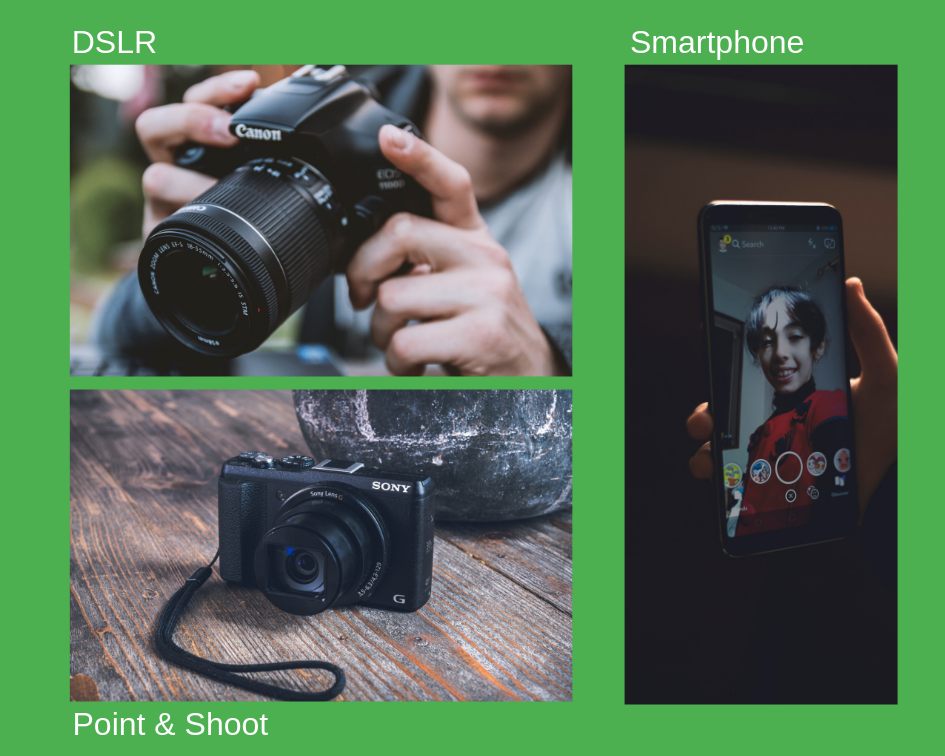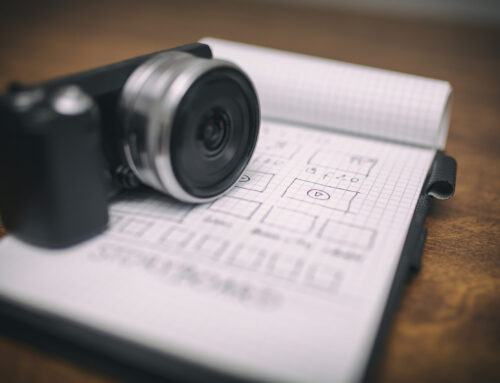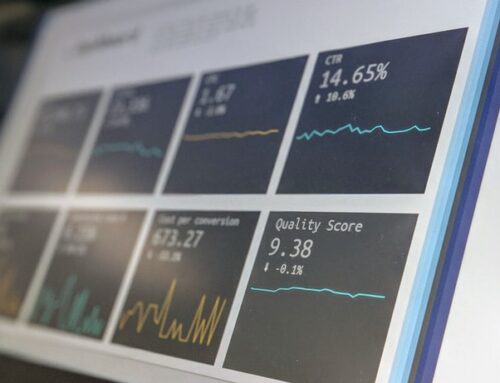With news of smartphone sales peaking, more people buying old refurbished phones, the fall of the point and shoot cameras (small handheld basic consumer cameras), the softening of the DSLR camera market and the rapid rise and growth of mirrorless professional cameras, it’s an exciting time to be in the photography market!

While a camera is merely a device to be used in photography, it is the most important tool to drive the success of the entire operation. Simply put, without a great photo, there is no demand or desire for the final product. So with the rise of the everyday smartphone, what has happened to the photography market, where people pay for photography services?
Consumers have quickly adopted smartphones (obviously) and as a result, these everyday devices have taken a large bite out the Point and Shoot camera market. Point and Shoot cameras are the small handheld devices that are not designed for professional quality photos, but rather to be convenient for consumers to travel with or for photographers to do reconnaissance shots. Consumers already have a simple camera in their pocket, their smartphone, there’s no need to bring along one of similar quality that does not provide additional value. There is no surprise that the point and shoot camera market is dying in light of the smartphone.
Now, while a smartphone can take great casual photos, there is more than meets the eye when we look deeper into its impact on the photography market as a whole.
First let’s take a look at the smartphone camera. To understand the smartphone’s priorities lets dive into the device and analyze the costs of its components. To put the camera/image components into perspective, if you were to buy a smartphone for only the camera, you would be overpaying by a staggering 1,280%. In a cost breakdown on a $326.50 Samsung Galaxy S8, for example, the camera/image components are only worth $25.50. You’re buying a phone, a gaming device, minicomputer to run apps and browse the internet, not a high-quality camera.
Smartphone Manufacturing Cost Breakdown
Yes, the smartphone does take good photos, we have all taken and shared one. We probably could have achieved the same with the point and shoot camera if we did not have a smartphone in our pockets. With that said the smartphone manufacturers are focused on the most common photo, the selfie. For example, in 2016, over 1,000 selfies are posted to Instagram every 10 seconds, according to ad week, and we believe that number has only grown bigger.
People are not posting just any photo either, they have to look good and they spend time crafting the perfect photo. The camera is not doing the work, the user is. 62% of Americans take 3-25 selfies before finding the right one to post, according to YouGov. The average woman between 16-25 years spends 5 hours a week taking photos of herself, according to a survey of 2000 women conducted by FeelUnique. When taking a selfie, 57% find a place with good lighting and 46% style their hair. Consumers are spending a lot of time and taking extra steps to ensure they have a photo worth sharing. Image quality is extremely important to them.
Now how does this translate into the photography market, where photos are sold? With everyone having a smartphone, taking tons of pictures, is anyone buying photos?
According to IBISWord’s December 2018 Photography Market Report (a leading business and market research company which provides insight to thousands of industries worldwide), there is foreseeable and sustainable growth within the photography market. The photography market consists of portrait services, wedding photography, commercial photography and all other services, including tour photo services. The industry’s growth has been driven by rising disposable incomes and increased demand for professional services. We believe one part of the driving force is the need to have high-quality photos for social media.
The photography market in 2018 is estimated at over $10 billion in the US, employing over 242,000 people with over 195,000 businesses. It’s estimated to grow at an annual rate of over 1.6% or about $160 million per year in the US for the next five years. Improvements in digital technology for professional grade cameras as well as increased affordability of this equipment have lowered the barriers to entry into the market.
What equipment is being used by the professionals that sells over $10 billion worth of photography services per year in the US and continues to grow?
Trovatten.com, which helps photographers with digital marketing and social media, did a study to uncover the most popular cameras amongst award-winning photojournalists. It discovered that they are the Nikon D5, Nikon D810, Canon EOS 5D Mark III. A smartphone does not make the list. The most important characteristics they look at are image quality, lightweight, fast autofocus and shutter speed. The job of a photojournalist is to tell a story to the world, much like a tour operator that wants to attract guests to their business or provide a photo worth sharing with the world.
DP Review, which says to have the most comprehensive database of consumer digital cameras on the internet and has a mission to provide the most authoritative coverage of digital photography gear in the world, stated in November 2018 that the best camera for sports and action photography is the Nikon D5 with the Nikon D500 close behind. They say this is because of its high-quality image, class-leading autofocus, subject tracking, and rapid bursts. Again, no smartphones made the list.
ExpertPhotography, Photoworkout, and What Photography Gear are all leading photography blogs and training resources for photographers. The best cameras for portrait photography according to them are Canon 6D, Sony Alpha a600, Canon EOS 80D, Nikon D7200, Panasonic DMC-GX8, and Canon EOS Rebel T6i. No smartphones were listed.
While consumers have gravitated to using the device that does not leave their side, their everyday smartphone, to take selfies, they do not have the same camera expectations for the professional market. Consumers’ need for high-quality photos has grown stronger, along with their budget for these products. The growing photography market is delivery high-quality photos using specialized equipment that takes amazing photos that people see worth buying and sharing. It’s a big market and it is actively growing.
Tour and activity operators are perfectly positioned to take leadership within the photography market. They are providing unique experiences, have amazing scenery, deliver authentic memories and get guests showing their real smiles.
Tour photos capture people with authentic smiles while participating in once in a lifetime experiences.
Tour operators are providing these extremely unique photos to guests that have bigger budgets for and a higher demand for purchasing these once in a lifetime memories. Guests are not going after a photo they can take themselves, they want a great photo and are actively hiring people to capture it for them.




